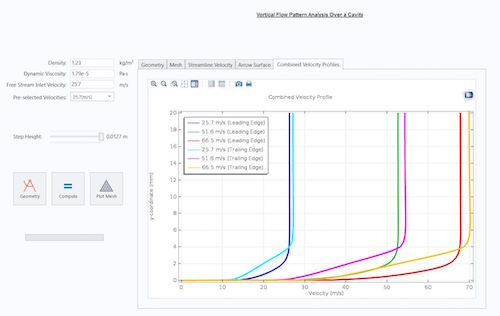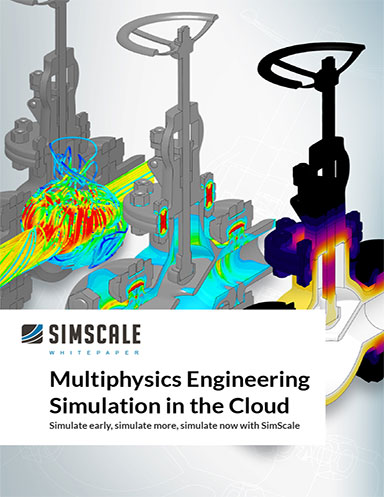COMSOL App Builder Schools Students in Simulation

University of Hartford engineering student created a COMSOL app depicting a boundary layer flow over a cavity. Image University of Hartford, Engineering Department
Latest News
October 12, 2017
Simulation has become a popular main course for most commercial engineering departments, yet it remains an appetizer for most college-level students, if it’s part of the diet at all.
That’s no longer the case at the University of Hartford, CT, which is slowly introducing simulation, specifically multiphysics simulation, to the student palette using COMSOL technology and specifically its Application Builder, which lets users create easy-to-use applications based on their simulations. Professor Ivana Milanovic, professor of mechanical engineering at the university, felt it was important to give students a hands-on and inquiry-based learning approach to simulation given its growing importance to real-world engineering roles.
“There’s a lot of simulation being used in business world—what we used to call real-world, dirty hands testing is now overwhelmingly simulation,” Milanovic explains. “Simulation is the future and students need to know it.”
 Using Application Builder, a University of Hartford engineering student created a COMSOL app depicting a boundary layer flow over a cavity. Image University of Hartford Engineering Department.
Using Application Builder, a University of Hartford engineering student created a COMSOL app depicting a boundary layer flow over a cavity. Image University of Hartford Engineering Department.There simply isn’t enough leeway in the schedules of most undergraduate engineering programs to introduce simulation concepts and analysis software in any meaningful way, she says. Milanovic might cover the theory related to heat transfer or fluid dynamics simulation, for example, but she could only do so through traditional lecture and book instruction buttressed by some multimedia support, which meant the concepts didn’t always resonate with students. Eventually, Milanovic took to providing additional material via the online component of her classes, but without a specific set of deliverables, most students didn’t engage.
“No matter how interesting, if they’re weren’t forced to look at it and experiment, they didn’t,” she says. “The challenge was how to help them get immersed in what they needed for their future.”
Milanovic began to modify her curriculum with hands-on simulation work using COMSOL, initially at the graduate level and eventually for two successive junior year courses: fluid mechanics and heat transfer. In addition to teaching simulation and modeling basics through hands-on use of COMSOL, Milanovic went a step further, tasking students to leverage Application Builder to create apps that would be usable by non-engineers. “It was designed to make them think about their customers and be able to translate the knowledge from the classroom into something that would comprehensible to non-simulation experts,” she explains.
 COMSOL Multiphysics 5.3a features support for acoustic analysis based on a hybrid boundary element-finite element (BEM-FEM) method for greater modeling power. Image Courtesy of COMSOL
COMSOL Multiphysics 5.3a features support for acoustic analysis based on a hybrid boundary element-finite element (BEM-FEM) method for greater modeling power. Image Courtesy of COMSOLKaren Brzostowski, a graduate student who is also employed full-time at a subsidiary of Pratt & Whitney, says Professor Milanovic’s hands-on approach to teaching simulation has definitely given her a leg up. In her current role, Brzostowski works with the NASA-developed Numerical Propulsion Systems Simulation system. “Having had experience with modeling software and understanding how the models gets to the answer really helped me professionally,” she says.
To address the growing popularity of COMSOL Application Builder Apps—at the University of Hartford and elsewhere—COMSOL has plans to add administrative capabilities to make it easier to mange apps in groups. That feature, along with new acoustics analysis capabilities based on the boundary element method, were among the highlights of a recent sneak peek at COMSOL Multiphysics 5.3a, slated to be released in the fourth quarter. Other capabilities slated for the new release include additional acoustics features, shape memory alloy materials for structural analysis, support for 3DConnexion SpaceMouse devices, and 150 new materials, among other enhancements.
Watch this video to learn how to build apps in COMSOL Application Builder.
Subscribe to our FREE magazine, FREE email newsletters or both!
Latest News
About the Author
Beth Stackpole is a contributing editor to Digital Engineering. Send e-mail about this article to [email protected].
Follow DE





